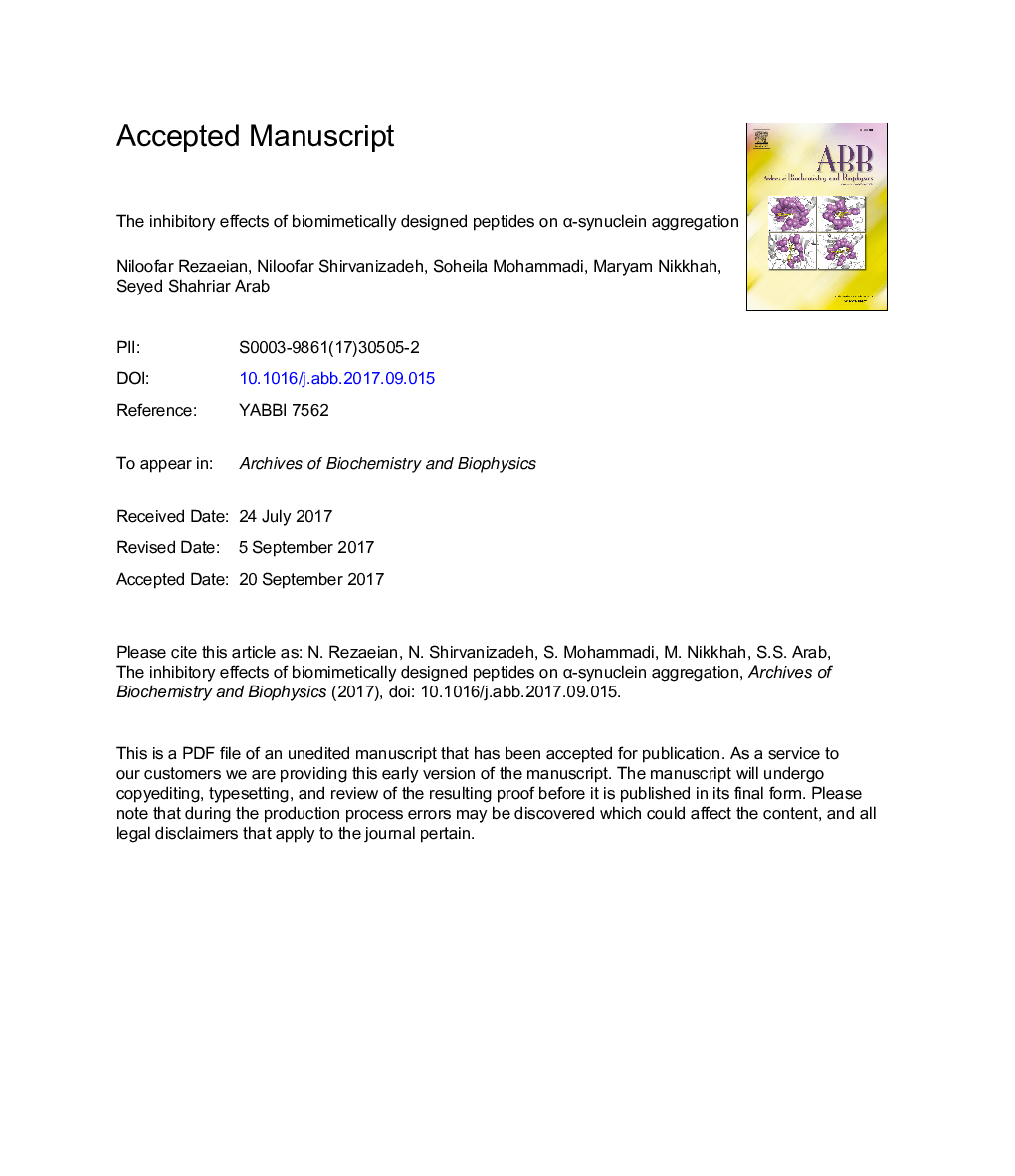| Article ID | Journal | Published Year | Pages | File Type |
|---|---|---|---|---|
| 8288940 | Archives of Biochemistry and Biophysics | 2017 | 28 Pages |
Abstract
Parkinson's disease is characterized by accumulation of inclusion bodies in dopaminergic neurons, where insoluble and fibrillar α-synuclein makes up the major component of these inclusion bodies. So far, several strategies have been applied in order to suppress α-synuclein aggregation and toxicity in Parkinson's disease. In the present study, a new database has been established by segmentation of all the proteins deposited in protein Data Bank. The database data base was searched for the sequences which adopt β structure and are identical or very similar to the regions of α-synuclein which are involved in aggregation. The adjacent β strands of the found sequences were chosen as the peptide inhibitors of α-synuclein aggregation. Two of the predicted peptides, namely KISVRV and GQTYVLPG, were experimentally proved to be efficient in suppressing aggregation of α-synuclein in vitro. Moreover, KISVRV exhibited the ability to disrupt oligomers of α-syn which are assumed to be the pathogenic species in Parkinson's disease.
Related Topics
Life Sciences
Biochemistry, Genetics and Molecular Biology
Biochemistry
Authors
Niloofar Rezaeian, Niloofar Shirvanizadeh, Soheila Mohammadi, Maryam Nikkhah, Seyed Shahriar Arab,
